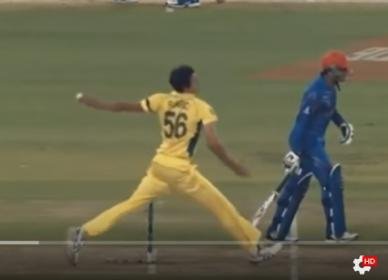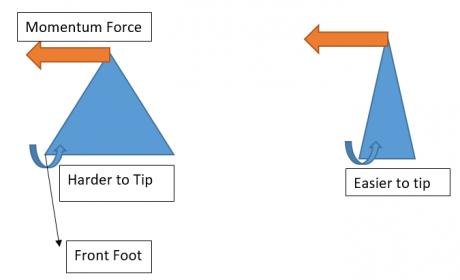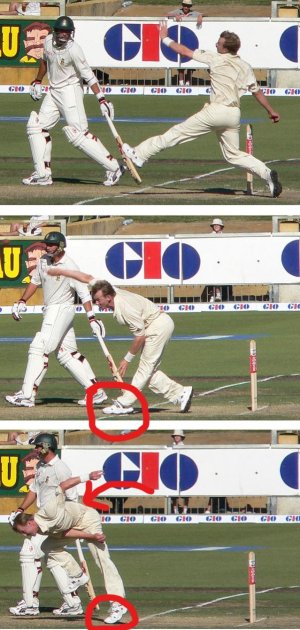Thanks, explained very well. This triggered a lot of the physics one learns in h/s, I’ve always had an interest in such things but external pressure forced me down the route of medical research.
This also essentially proves that running in faster allows you to bowl faster (as long as it is still rhythmical). A faster run-up simply means you have a longer delivery stride. And as you pointed out increasing the braking force, which allows for the transfer of energy to the ball.
Tha second picture of Lee points out that you need a braced front leg. This simply absorbs a lot of the energy you have tried to generate in the run-up. If you want to bowl fast, you cannot be absorbing so much energy, but rather, transfer this energy with a straight front leg all the way to the ball.
It always makes me sad when I hear people were unable to pursue their interests when choosing a profession. A very common story in Pakistan. Well I hope you come to enjoy what you do and make good friends in your profession. Even if one doesn't enjoy his work the camaraderie among fellows can make things a lot better.
On the topic a faster run-up does allow you to bowl faster as long as it's rhythmic and your body can handle it. There is only so much your body can take and if you try to run-in too fast you might have to slow down when you approach the crease which is counter productive to say the least. Actually from the little bit I know you don't actually need a very long run-up or run very fast as there is only so much force that can be transferred into the delivery, most bowlers have an unnecessarily long run up as far as physics goes but they do it because it helps them build good rhythm. Bowlers who can build up their rhythm more quickly can bowl just as fast from a shorter run-up a prime example would be Wasim Akram who shortened his run-up as he was able to bowl just as quickly with the shorter run-up.
Another interesting phenomenon somewhat related to stride length is the type of front foot contact. I did a project on the front foot contact forces of fast bowlers a couple of years back and read a few research papers on the issue. Essentially there are two ways your front foot can hit the turf:
1) Flat foot: Your front lands flat onto the pitch. This is quite detrimental to your knees and bowlers who have this style of landing are quite injury prone.
2) Heel-toe: This is when your heel hits first and then you role onto the toes. This is much more easier on your knees as the impact is spread over a larger interval.
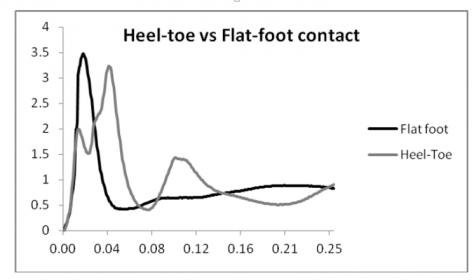
At first one might think that the flat foot contact will allow one to bowl faster but there is no evidence of the sort. As I pointed out before the front foot acts like a pivot and the heel-toe style contact allows one to to perform a smoother rotation I believe. But I will write that I haven't discovered any research stating outright that flat foot contact hampers the speed either. As far as established research goes (that I know of, remember this project was 2 years back and I don't claim that my literature review was extensive) there is no appreciable effect on the speed of the delivery but there is an appreciable detrimental effect on the knees of the bowler.
I would like to point out that a perfectly flat foot contact is an extreme scenario and hardly ever occurs. When I say flat foot contact I mean the angle of the foot with the ground is close to zero and angle with the leg is appreciably greater than 90 degrees.
I watched a few videos at the time and a few notable bowlers who had flat foot contact were Shoaib Akhtar, Junaid Khan and Mohammad Amir. Brett Lee also tilted towards this sort of contact but his was more mixed. And looking at their history of injuries the correlation is easily recognizable.
Junaid Khan: This is the best I could find. Look at his front foot and how it is almost parallel to the ground before contact with the ground.
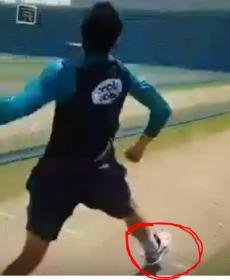
Here's one of Amir. Look how it's almost parallel to the ground. And we have seen Amir hobble off quite a few time recently.

A few bowlers who had a heel-toe contact were Dale Steyn, Mitchel Johnson and Mitchell Starc. All bowlers who could bowl pretty fast.
Dale Steyn: Look how his heel hits first and there is an almost 90 degree angle between his leg and foot.
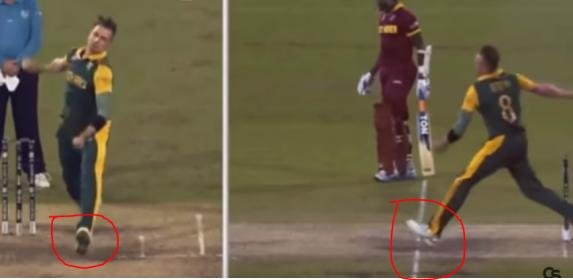
Also look at Mitchell Starc.
